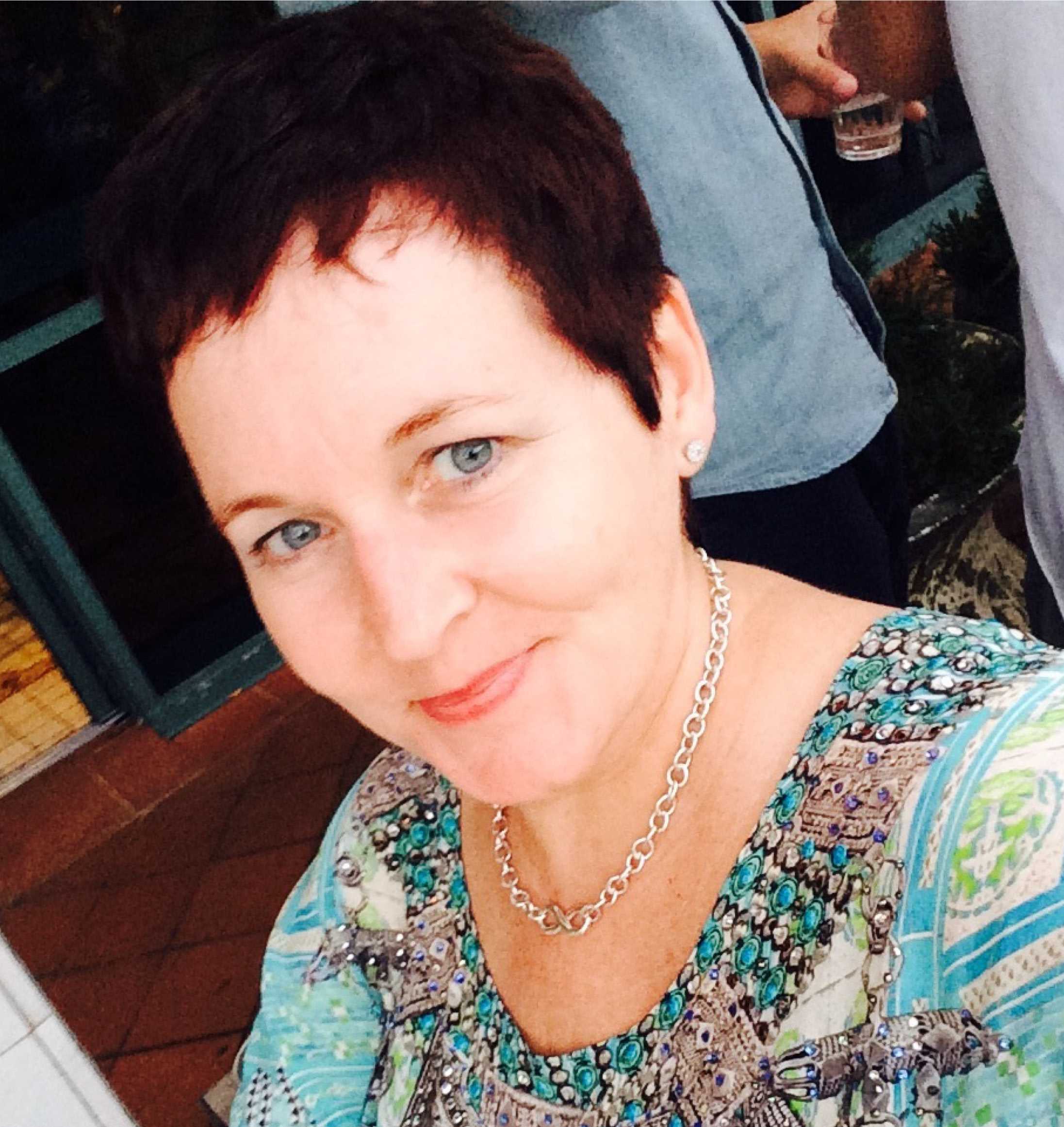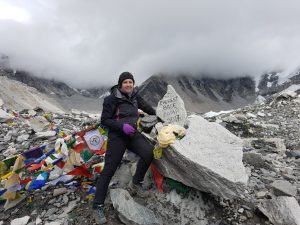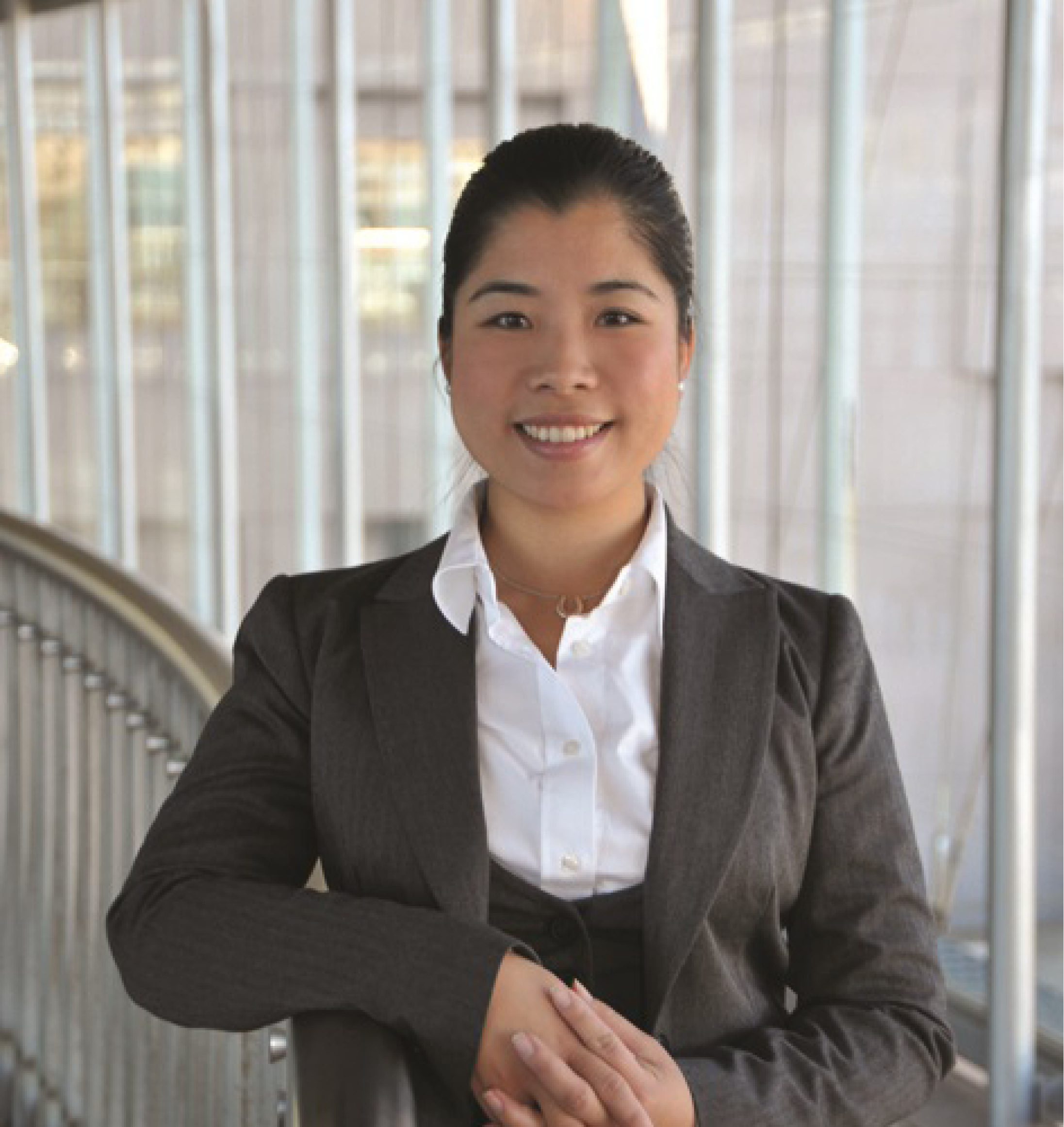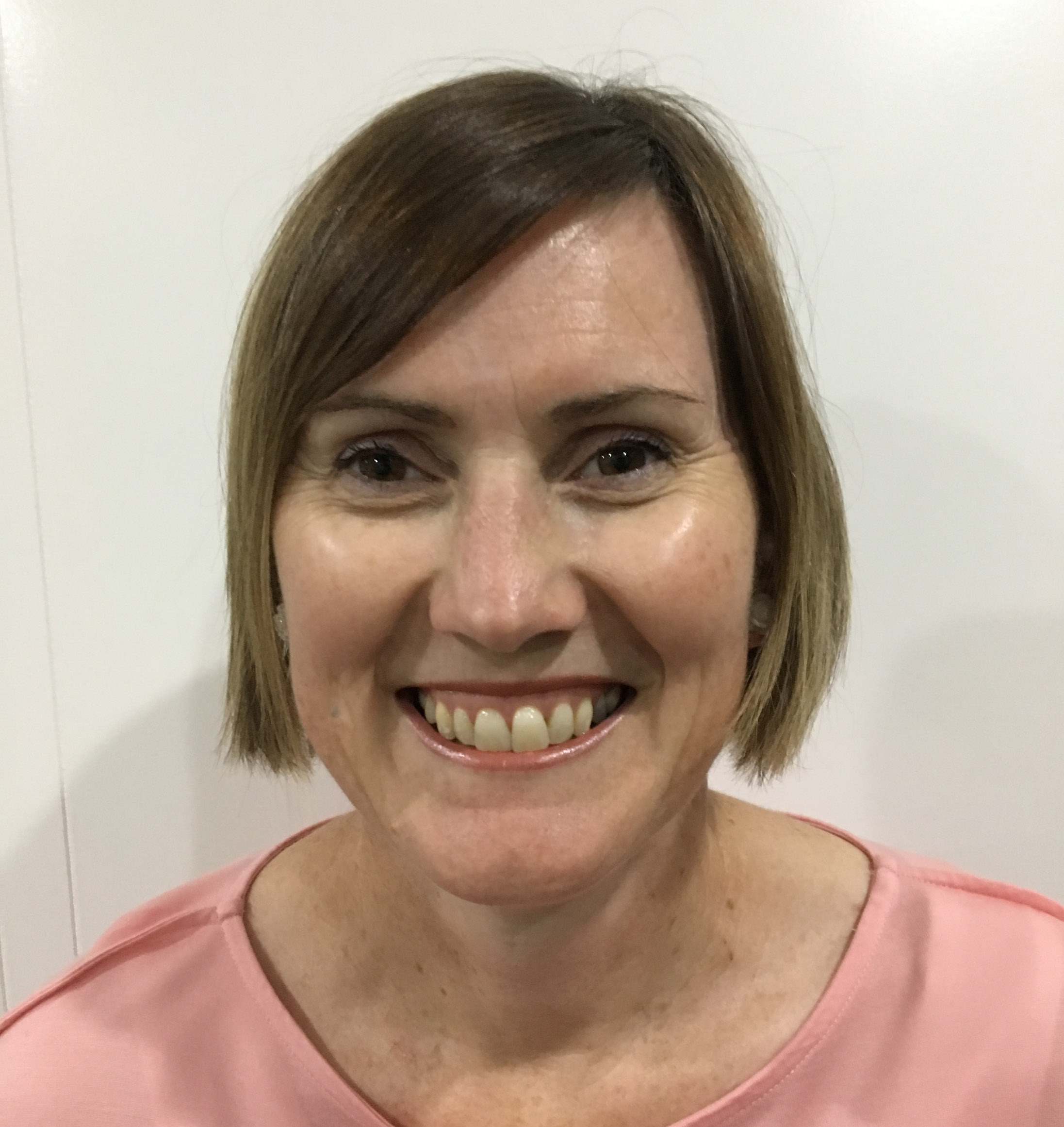Your stories
Today, there are over 4 million Australians living with arthritis, and each of them has their own unique arthritis journey. Here are just a few:

Michelle
I live with Psoriatic Arthritis, Sjogrens Syndrome and Fibromyalgia. I was diagnosed with seronegative inflammatory arthritis in 2007 at 37 years old and a few years later the name changed to Psoriatic Arthritis. Some of my first symptoms were that my eyes and mouth were incredibly dry and my hair was falling out at an alarming rate. I was seronegative so it took a while for my GP to refer me onto a rheumatologist. After about a year my joints started getting more and more painful and then my blood work showed up inflammation so when I did see a rheumatologist it was a relatively quick diagnosis and commencement of treatment.
I’ve learned over the last decade that it’s important to be a proactive self manager of your health – as much as possible. That means little things like keeping follow up appointments with health professionals, keeping on top of what medications you are on, preparing for appointments with doctors with questions etc.
I have also been lucky to build a great team around me along the way. A GP, rheumatologist and an opthalmologist who I really trust. They can then refer me on to other health care providers as needed. It is so important to have this trust relationship – and it can take years to build this up.
I choose to live as active a life as possible with PsA. However, there are days where the fatigue and pain can limit what I do. It can suck! However, every day I get out of bed and I consciously and intentionally choose to make the best of my day.

Patrick
My name is Patrick, I’m 11 years old and in Year 6. I live with my mum and dad and have two brothers and a sister. My passions are playing rugby league and the Cronulla Sharks, I play in my local under 12s rugby league team. I also love surfing, paint ball, basketball, sports at school and TV. When I grow up I want to be a football player or a pilot in the air force.
I am a pretty normal kid except that I have juvenile arthritis.
When I was six years old I went to my cousin’s birthday party at a park and came home with a sore and swollen knee, the doctor thought I must have hurt it in the park. Over the next couple of weeks I went to the doctor a lot, had x-rays, an ultra sound, antibiotics and the thing I hate more than anything, blood tests.
I started getting sicker and my knee got worse, about a month after my knee first started hurting the doctor suggested that we go to the hospital.
That night I had an emergency operation on my knee, they thought I had septic arthritis (an infection) in my knee. I stayed in hospital for around a month and spent another month in hospital in the home. During this time I had a lot of tests: cat scans, MRI’s, more x-rays, blood tests, a lot of medicine and another operation on my knee.
After a couple of months we found out that I had arthritis in my knee. Not long after, I got arthritis in my other knee and then I also got it in my thumbs. I tried lots of different medicines to help my arthritis, some made me very sick, some didn’t work and some involved me having a couple of procedures in hospital. My mum now gives me two needles a week and it really works, I only sometimes have a flare up and my knees don’t hurt as often, only when I am really tired, sick, if I have done to much or if I am due for a needle.
I used to wear splints on my legs at night to keep them straight, although I always had nightmares when I wore my splints. My parents told me that when I was younger I used to cry all night in my sleep from the pain.
Mornings are the worse time of the day for my arthritis. Sometimes when I wake up my knees are stiff, they ache and I have trouble straightening them. When my knees were really bad I would wake up and not be able to straighten my legs, the pain was so bad my Mum or Dad would have to carry me to the toilet and I would scream because it would hurt me so much to move. Even when I lay still in bed my knees would ache. The only thing that helped was some Nurofen and a heat pack on my knees and we would have to wait a couple of hours before I could move. I missed a lot of school because my knees wouldn’t start feeling better until lunch-time and my Mum and Dad took turns taking time off work to be home with me.
My sister used to call me a faker because I was always sick in the mornings but she was just jealous because she couldn’t stay at home with Mum and Dad.
I used to look very sick and pale and for a while I didn’t grow any taller and I still have trouble putting on weight. I used to walk like an old man, shuffling, limping and frail. I used to need crutches and a walking frame to get around, although I would only use the crutches at school because they were cool.
My Mum and Dad used to carry me around a lot because I couldn’t walk for long. When I did hydrotherapy classes at the hospital my Mum would have to carry me from the carpark to the pool and back again because I could hardly walk. The physios tried to talk me into getting a wheelchair but I refused.
At school I sometimes can’t sit on the floor and cross my legs so I often have to sit in a chair in class or next to the teachers on a chair during assembly. When this happens other kids stare at me.
For a long time I couldn’t play in the playground at school, I got really sad because I couldn’t play soccer or football with my friends at recess and lunchtime and I had to spend all my time in the library. I missed out on a lot: parties, sports carnivals, play dates, a lot of school and a couple of seasons of football. Because with arthritis there are some good days and some bad days I think my friends don’t really understand what arthritis is.
Sometimes I think my teachers don’t know whether to believe me when I tell them I can’t do things like PE or yoga. I don’t like that I am different to other kids. I used to ask Mum if I could wear bandages on my knees so that people could see the reason why I needed crutches.
I went to Camp Footloose, a camp for kids with arthritis, I met a lot of other kids with arthritis and some of them were worse than me. It worried me to find out that you can get arthritis in your back and neck so in many ways I think that I am lucky that I only have arthritis in my knees and thumbs.
I have low muscle tone and I struggle to write for more than two minutes because my thumbs, hands and shoulder hurt and I can’t sit on the floor for long as my muscles in my back are not strong. We live in a two storey house and I have trouble walking up the stairs. My parents have now made a bedroom for me downstairs but I don’t like sleeping downstairs when everyone else is upstairs.
I am lucky that my arthritis is under control and I can now play football and live a normal life, although I do worry about injuring my knees and not being able to walk. I get worried when I have a flare up because I am always hoping that my arthritis is getting better.
I don’t know if my arthritis will go away, one day I hope it does.

Lana
My name is Lana and I have been living with Juvenile Idiopathic Arthritis (JIA) for the last 27 years. When I put a time frame on it like this, it makes me think I am much older than I am, however, I just turned 29 years old.
I was diagnosed with JIA when I was 2 ½ years old.
I was an active toddler, always climbing trees, playing with my dog, running and falling. It was due to this that my parents didn’t think too seriously when they noticed I had a swollen knee and a slight limp one day. They took me to the doctor expecting I had just fallen over, not expecting to be referred to a specialist. We went from specialist to specialist trying to get an answer. One doctor suggested doing an arthroscopy as it was a very common procedure for footballers. That way he could get a look inside my knee and hopefully give my anxious parents some answers. Despite wanting an answer, the thought of drilling into their toddler’s knee seemed too much. After all, I was only a toddler, not a footballer!
Eventually, I was diagnosed with JIA which was a blessing and a curse at the same time. I was originally diagnosed in my left knee and three left fingers I was also diagnosed with uveitis in my left eye, a condition that required me to have daily eye drops. Many years later, I was also diagnosed with arthritis in the left side of my jaw.
After the initial diagnosis, I was immediately started on medication to control JIA symptoms. These medications left me covered in bruises and with dental issues. I remember having good days and bad days. There were nights when I would wake up crying from the pain in my knees and days where walking to school or playing in the backyard was just too painful for me.
As the years have progressed, I have been on many different medications, some with worse side effects than others. But I can finally say that I have found a medication that works for me. I feel the best I have ever felt. I am more active than I have ever been in my whole life and I love it. I keep myself busy, playing Oztag three or more times a week and going to the gym almost every day.
I still have days where I have more pain than other days, but I have my ways of managing this and working around it to remain as active and positive as I can.
 2017 was definitely a huge milestone for me personally as I decided to trek to Everest Base Camp. The decision was made in April 2017 which is when I decided I needed some help to prepare my body for such a huge trip. I started to go to a gym and work with a personal trainer that specialised in people with arthritis. This trainer worked with me one-on-one to prepare my body for the challenges I would face on the trek. Despite the training, the trek to Everest Base Camp was without a doubt the hardest thing I have ever done and will probably ever do. The six days of walking to get to base camp were filled with tears and ibuprofen. I had taken my medication before I left for the trek and planned to take it when I returned. Unfortunately, due to the extreme weather changes (we went from hot 35-degree days to snow and negative temperatures in the space of six days) and lack of electricity I made the decision to not take my medication with me. It worked out well though as I have my injection once a fortnight and the trek fit perfectly within this timeframe.
2017 was definitely a huge milestone for me personally as I decided to trek to Everest Base Camp. The decision was made in April 2017 which is when I decided I needed some help to prepare my body for such a huge trip. I started to go to a gym and work with a personal trainer that specialised in people with arthritis. This trainer worked with me one-on-one to prepare my body for the challenges I would face on the trek. Despite the training, the trek to Everest Base Camp was without a doubt the hardest thing I have ever done and will probably ever do. The six days of walking to get to base camp were filled with tears and ibuprofen. I had taken my medication before I left for the trek and planned to take it when I returned. Unfortunately, due to the extreme weather changes (we went from hot 35-degree days to snow and negative temperatures in the space of six days) and lack of electricity I made the decision to not take my medication with me. It worked out well though as I have my injection once a fortnight and the trek fit perfectly within this timeframe.
When I finally made it to Everest Base Camp, I was so emotional I had to sit down to just take it in. Despite my arthritis, I had just walked for six days through rough and rocky terrain, up and back down steep mountains. After getting a photo at Base Camp, my partner surprised me by getting down on one knee to propose. I thought I couldn’t possibly be more emotional and that nothing could top surviving this trip but that was the cherry on top.
It’s been almost a year now since I walked into Everest Base Camp after six days of trekking and I have to say I still can’t believe I got there. Yes, I still have my struggles living with arthritis, but, I am indeed one of the lucky ones. I am lucky to have such an amazing network of support and I am lucky to be on an amazing medication that allowed me to reach my goal. I know there are lots of people that I have spoken to that don’t suffer from a debilitating disease, yet would not even consider attempting a trek to Everest Base Camp, but I did despite living with JIA for the last 27 years!

Sharon
My initiation into the Arthritis family began when I was 31 years old. What I thought was a pre-existing ankle injury from tearing a ligament some years ago turned into the start of my rheumatoid arthritis (RA) journey.
Over a period of 6 weeks, the number of joints affected by pain, swelling and stiffness increased, to the point where I struggled to get out of bed without excruciating pain. The pain was also more prevalent in the mornings and at night.
Thankfully, my GP’s quick and early diagnosis was the key to not only getting treatment as soon as possible, but to allow me to adjust and manage my RA.
To be honest, the first six to twelve months after the diagnosis was the most difficult. You learn to deal with the side-effect of medications and also what your body limits you to do in terms of activity. You reset expectations about what you want and can get out of life and it really tests you mentally, physically and emotionally.
On the other hand, it has been life-changing in so many positive ways.
I found that in addition to having a great team of specialists supporting me, my family and friends have been an instrumental part of getting me back on track. I also learned to better look after my body and to listen to it.
I sought support and information from various organisations like Arthritis Australia and Arthritis and Osteoporosis NSW and I found that the more I was educated about the condition and other people’s experiences, the more I was able to cope.
Additionally, my workplace was also supportive in ensuring that my equipment was ergonomically friendly and their flexible work practices were something I was most grateful for, especially in helping me manage medical appointments and challenging days where I wasn’t fit for travelling to the office.
I am thankfully relatively pain-free now: I believe that this is due to a combination of my lifestyle choices, medical management, appropriate activities and having a positive mindset. I do have occasional flares (mainly in winter) to give me a reality check and remind me that the RA is there, but this hasn’t stopped me in pursuing my interests and hobbies. I especially enjoy horses and horse-riding. All my aches and pains disappear when I spend time with my horse, and riding has helped develop my core strength and balance. I also do Pilates each week to develop and reinforce strength in various parts of my body.
I do hope for a cure to be found through the wonderful research effort that is being made.
In the meantime, I’m grateful for much that I can still do.

Linda
I was a very active and sporty child. I was told I had growing pains a lot and my joints were very flexible. I have a significant familial history of autoimmune disorders and arthritis including rheumatoid arthritis (RA), polymyalgia rheumatica, gout and osteoarthritis.
In my late 20’s I started having pain in my left index finger. It was hot, stiff and swollen. It took 2 years for my GP to convince me that joint pain at 30 was not normal and I had a rheumatology review. By age 32 all the joints in my hands were affected, progressing to both wrists, elbows and shoulders by age 34.
My RA continued to progress especially after the birth of my 2 sons, despite trying various medications, job change, taking supplements and diet changes. In the past 2 years flares have been more frequent, and I have developed bursitis in my hips, knees and shoulder, Raynaud’s disease and chronic gastritis. My RA is now in my jaw and ears.
My chronic pain makes me tired, cranky, frustrated, but also strong and determined. I cannot work more than 10 hours per week as a nurse and I have to pace, plan or modify my activities and cancel things regularly. Although I have had RA for 17 years now and continue to face the same challenges every day, I’ve learnt to cope/live with them.
I listen to my body, can tell when a flare is coming, how far to push my body and when to give in, ask for help and take it easy. Regular exercise, aquatic physio, eating a varied diet, having good sleep habits, taking medications, regular rheumatology review and doing what I can when I can seems to be a good recipe for now.
Sign up to Arthritis Insights
Regular updates, news and research findings delivered to your inbox: